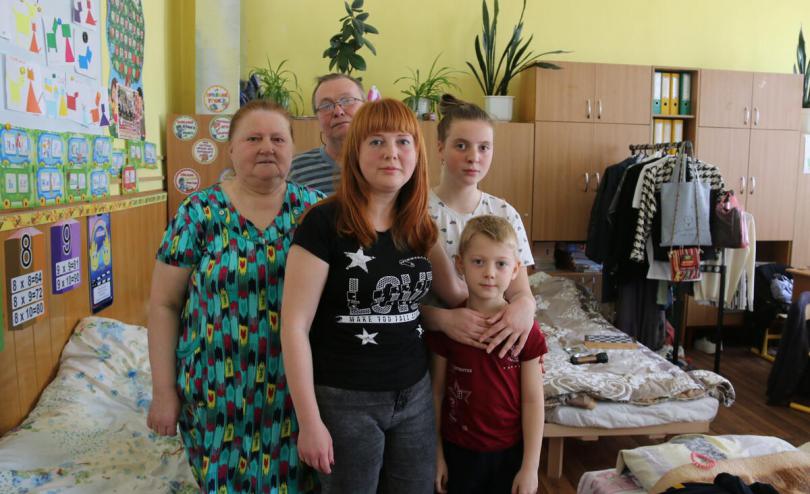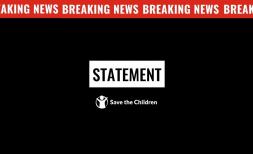Ukraine: Twice as many schools attacked in the past 100 days as during the first 7 years of conflict

KYIV 2 June 2022 – More schools in Ukraine were damaged and destroyed in the past 100 days than in the first seven years after fighting broke out in 2014, Save the Children said today.
At least 1,888 schools have been damaged and destroyed by shelling and bombing since the conflict escalated on 24 February, according to Ukraine’s Ministry of Education and Science. That is more than double the number of such attacks recorded in eastern Ukraine from 2014 to 2021, when about 750 schools were damaged, destroyed or forced to close.
The war has disrupted the education of all 7.5 million children who were living in Ukraine at the beginning of this year.
“The fact that Ukraine is facing record high attacks on schools should outrage everyone. With each day that passes in this war, children’s lives and futures are put at greater risk,” said Onno van Manen, Save the Children’s acting Country Director in Ukraine. “This war must end now.”
The relentless bombardment in Ukraine has forced more than 6.7 million people to flee the country in the past 100 days—around half of them children. On average, that’s approximately 33,500 children every day.
However, many thousands of children like Mariia*, 13, have been displaced inside Ukraine and some are using the remaining schools as shelters from the violence.
Mariia fled the eastern Donetsk region with her mother, six-year-old brother and their cat when fighting intensified near their home town. The family travelled for two days by train to L’viv. From there, they went further until they found a school where they could safely shelter.
“When we left our home region, I was glad that we would not hear those explosions [anymore]. But I was sad that we were leaving home, our apartment,” said Mariia. “Now, we live in a different atmosphere, there are a lot of people here. Everything has changed.”
Mariia and her family have been living in a classroom and sharing bathrooms with 60 other people in the school in Chernivtsi, western Ukraine, since April.
“Physically, I feel okay, but emotionally it’s been difficult,” said Mariia. “However, I do hope we can go back home. And if not, we will settle here. I hope that all the people will be fine and have a peaceful sky.”
Mariia’s mother, Olena*, explained that the conflict is taking a serious toll on Mariia’s physical and mental health. Save the Children is providing the family with cash assistance to help them buy medicine, food and other basic necessities.
“My daughter has a chronic disease that gets worse because of the stress. And, of course, in all the current circumstances, her condition has deteriorated significantly,” said Olena. “During the war at home, we could not control our daughter's condition, so as soon as we received financial aid, we were able to resume treatment and get results.”
One in every 10 schools that came under attack this year were completely destroyed, and more than half of the 1,708 schools that were damaged were located in eastern Ukraine.
If attacks on schools continue, children like Mariia will continue to bear the brunt of the war. A single attack can not only cause devastating injuries to children, physical and emotionally, but also deprive hundreds of students of the chance to receive a good-quality education. Sometimes, a community’s only place of learning is destroyed.
Although education is a top priority for children and parents in crisis, it is all too often the first service to be suspended and one of the last to resume. A Save the Children report published in 2019 for which more than 1,200 children across six crisis-affected countries were interviewed found that nearly one in three children (29%) wanted the chance to go to school above all else.
Currently, all schools in Ukraine are closed. However, Save the Children has helped the Ukrainian authorities improve the country’s online learning system so that children like Lev*, 11, still have access to engaging digital learning.
Lev now lives in a shelter in Chernivtsi, about 1,000 kilometres from his home in Kharkiv. He has not seen the inside of a classroom since the outbreak of war. Instead, he is continuing his studies online.
“I haven’t seen my school in a long time. I wanted to go to school that Thursday (February 24), but I couldn’t,” said Lev, who started online learning two days before the war began.
While some children in Ukraine like Lev are keeping up with school through online learning, others have had to put their education on hold, especially those living in areas with active fighting and limited access to internet or devices, and those fleeing the country.
“The fact that schools in Ukraine have been bombed and shelled twice as often in the past 100 days than in the seven-year conflict prior to this escalation is utterly despicable,” van Manen continued.“Every attack on a school is an attack on children, just as every war is a war on children.”
The recent fighting has exacerbated an already dire humanitarian situation, especially in the eastern areas of the country. Prior to the escalation of violence, many children in eastern Ukraine were already too scared to attend class and distressed by the presence of armed soldiers in and around their schools.
Save the Children is calling on all parties to the conflict to cease attacks on - and threats against - schools, and refrain from any military-related use of educational facilities. The presence of military forces or other armed groups in schools damages facilities, disrupts students’ education and can provoke attacks from opposing forces. Schools must be protected as safe spaces that provide shelter from harm and the opportunity to learn and play.
In Ukraine, Save the Children is delivering education kits to keep children learning wherever they can as well as distributing bunker kits with toys and educational tools to children sheltering in railway stations and underground to stay safe from the conflict. The aid organisation is also working with the Ministry of Education and Science, local authorities and partners to establish Digital Learning Centres in shelters across the country. These centres provide safe spaces for children to access devices or use their own to continue learning.
With the help of local partners, Save the Children is providing shelter, food, cash, fuel, psychological support, baby and hygiene kits to displaced families. It is on the ground, distributing essential household kits to families affected by the conflict.
Save the Children has been operating in Ukraine since 2014, delivering humanitarian aid to children and their families. It is now supporting refugee families across Europe and helping children to get access to the services they need, including education through digital platforms.
ENDS
Notes to editor:
- According to Ukraine’s Ministry of Education and Science, as of May 28, 1,888 education institutions have suffered bombing and shelling, with 1,708 damaged and 180 (10.5% or one in 10) destroyed. These figures have not been verified by the UN.
- In eastern Ukraine – where 57% of all school attacks in Ukraine this year have taken place, the number of schools damaged in each area as of May 28 is listed as follows:
- Luhans’k: 143
- Kharkiv: 372
- Dnipropetrovs’k: 20
- Zaporizhzhya: 14
- Dibets’k: 433
- Situation Ukraine Refugee Situation (unhcr.org)
- Schools in Ukraine were closed at the start of the conflict, resulting in all children experiencing some form of disruption to their education. Keeping education going for Ukraine’s children - Geneva Solutions
- According to the Kyiv School of Economics, it is estimated that every week, Ukraine suffers US$4.5 billion worth of damage to civilian infrastructure – Forbes.
*******************************************************************************************************************
For further enquiries please contact:
- Samantha Halyk Samantha.halyk@savethechildren.org (based in London)
- Kim Gardiner kimberley.gardiner@savethechildren.org.au (based in Ukraine)
- Our media out of hours (BST) contact is media@savethechildren.org.uk / +44(0)7831 650409
We have spokespeople available in Ukraine and across the region.
Please also check our Twitter account @Save_GlobalNews for news alerts, quotes, statements and location Vlogs




